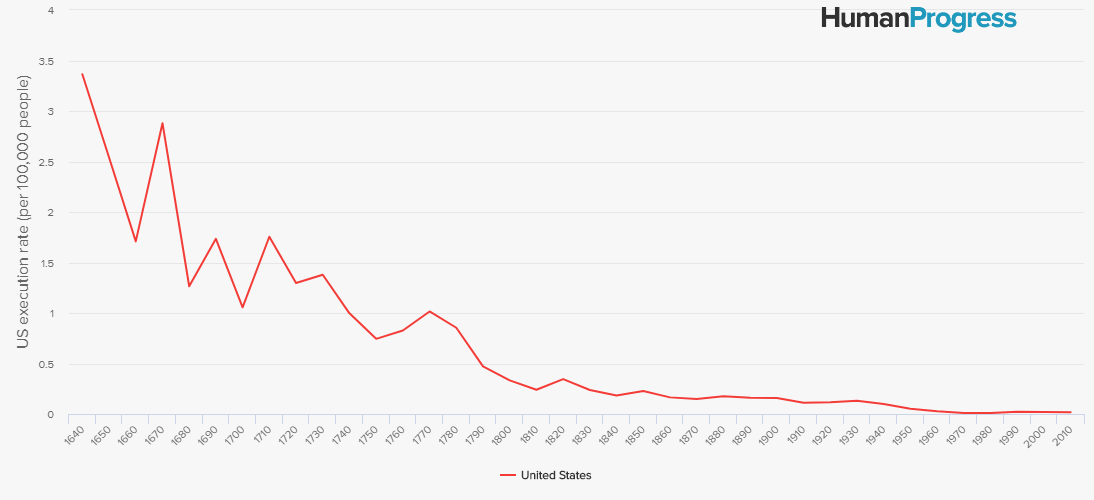The U.S. federal government recently ordered the death penalty to be reinstated for the first time in sixteen years and has scheduled the execution of five death row inmates. This policy change goes against the widespread trend toward fewer executions.
Twenty-one U.S. states, plus the District of Columbia, have totally abolished the death penalty for all crimes. Seven of those states abolished the practice in my lifetime. New Hampshire just officially abolished it in 2019.
In many U.S. states where executions are still legal, none have been carried out for years and the law is mainly symbolic. Kansas, for example, has not executed any prisoners in over forty years. The U.S. federal government, similarly, never officially abolished the death penalty but has had a moratorium on the practice since 2004 – a moratorium ended by the new policy ordered by Attorney General William Barr.
Harvard University’s Steven Pinker has chronicled the decline of capital punishment in his 2011 book, The Better Angels of Our Nature. He estimated that the execution rate in the United States has been falling for four centuries, from nearly 3.5 executions per 100,000 people in the 17th century. His graph is pictured below.

Trends against capital punishment can also be observed abroad as well. Consider Europe. Prior to the Enlightenment, European nations once used the death penalty for a vast number of crimes. England, for example, had 222 capital offenses in its legal system well into the 18th century. Until the early 19th century, it deemed many minor crimes, such as stealing anything worth more than four dollars in today’s currency, to be worthy of execution. As the values of the Enlightenment spread, that number of capital offenses shrunk to four by the middle of the 19th century. Today, in Europe, capital punishment remains legal only in Belarus and Russia.
This year, Malaysia abolished mandatory capital punishment. Last year, Burkina Faso abolished the death penalty in its new penal code. Moreover, Gambia and Malaysia declared an official moratorium on executions. Last year, Amnesty International noted, at least 690 executions took place in 20 countries. That number was 31 percent lower than in 2017. The vast majority of recorded executions happen in Iran, Saudi Arabia, Vietnam and Iraq.
Then there are China and North Korea. The two communist countries execute more people than other countries and may well execute more people individually than the rest of the world combined. Unfortunately, there are no reliable statistics for those secretive societies.
The move to reinstate capital punishment federally in the United States represents a reversal after more than a decade-long hiatus in the federal use of capital punishment. But opponents of the practice can take heart in the successful abolition of the death penalty in an increasing number of U.S. states and countries around the world.

